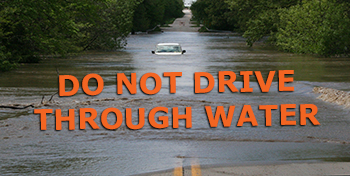The Importance of Resilient Communities
In today’s ever-changing world, the concept of resilience has become increasingly vital for communities to thrive in the face of challenges and uncertainties. Resilient communities are those that can adapt, recover, and grow stronger in the aftermath of adversity.
Key Characteristics of Resilient Communities
Collaboration: Resilient communities foster strong relationships and partnerships among community members, local organizations, and government agencies. By working together towards common goals, they can effectively address challenges and support one another during difficult times.
Preparedness: Proactive planning and preparedness are essential components of resilience. Communities that invest in disaster preparedness, infrastructure improvements, and emergency response training are better equipped to mitigate risks and respond effectively to crises.
Diversity and Inclusion: Resilient communities embrace diversity and inclusivity, recognizing the unique strengths and perspectives that each individual brings to the table. By valuing diversity, these communities can tap into a wide range of talents and resources to address complex problems.
The Benefits of Building Resilience
Building resilience within communities offers a multitude of benefits, including:
- Enhanced Disaster Recovery: Resilient communities can bounce back more quickly from disasters such as floods, hurricanes, or wildfires due to their preparedness measures.
- Social Cohesion: Strong community bonds fostered through resilience-building activities promote social cohesion and support networks during times of crisis.
- Economic Stability: Resilient communities are better positioned to maintain economic stability by minimizing disruptions to businesses and infrastructure following disasters.
- Sustainable Development: By integrating resilience into urban planning and development strategies, communities can ensure long-term sustainability and growth.
Cultivating Resilience in Your Community
To cultivate resilience within your community, consider taking the following steps:
- Educate community members on disaster preparedness and response strategies.
- Foster strong social connections by organizing community events and initiatives.
- Collaborate with local authorities and organizations to develop emergency plans tailored to your community’s needs.
- Promote environmental sustainability practices to reduce vulnerabilities to natural disasters.
By prioritizing resilience-building efforts, communities can create a safer, more connected environment where individuals feel supported and empowered in the face of adversity.
9 Essential Tips for Building Resilient and Inclusive Communities
- Encourage community involvement and participation in decision-making processes.
- Promote diversity and inclusivity within the community.
- Foster strong social connections and support networks among residents.
- Invest in education and skills training to empower community members.
- Build infrastructure that is resilient to natural disasters and other emergencies.
- Support local businesses and entrepreneurship to stimulate economic growth.
- Prioritize environmental sustainability and conservation efforts within the community.
- Ensure access to healthcare services and mental health resources for all residents.
- Establish effective communication channels for sharing information and promoting transparency.
Encourage community involvement and participation in decision-making processes.
Encouraging community involvement and active participation in decision-making processes is a key tip for building resilient communities. By engaging community members in discussions and decisions that affect their lives, local authorities can foster a sense of ownership and empowerment among residents. This inclusive approach not only strengthens social cohesion but also ensures that diverse perspectives are considered, leading to more effective and sustainable solutions to community challenges. When individuals feel heard and valued in the decision-making process, they are more likely to actively contribute to building a resilient and thriving community for all.
Promote diversity and inclusivity within the community.
Promoting diversity and inclusivity within the community is a key aspect of building resilience. By embracing individuals from different backgrounds, cultures, and perspectives, communities can tap into a broader range of talents and resources to address challenges effectively. Inclusive communities create a sense of belonging for all members, fostering stronger social connections and support networks that are essential during times of crisis. Embracing diversity not only enriches the community fabric but also strengthens its ability to adapt and thrive in the face of adversity.
Foster strong social connections and support networks among residents.
Fostering strong social connections and support networks among residents is a crucial aspect of building resilient communities. By nurturing relationships and creating a sense of belonging, communities can enhance their ability to withstand and recover from challenges. Strong social connections provide emotional support, practical assistance, and a sense of solidarity during times of adversity. These networks not only strengthen community bonds but also contribute to overall well-being and resilience in the face of unforeseen circumstances. Encouraging collaboration and mutual aid among residents can create a supportive environment where individuals feel empowered and united in navigating difficult situations together.
Invest in education and skills training to empower community members.
Investing in education and skills training is a crucial tip for building resilient communities. By providing community members with access to quality education and training opportunities, individuals can acquire the knowledge and skills needed to adapt to challenges, contribute meaningfully to their community, and effectively respond to crises. Empowering community members through education not only enhances their personal growth and development but also strengthens the overall resilience of the community by fostering a well-equipped and knowledgeable population capable of navigating uncertainties and building a brighter future together.
Build infrastructure that is resilient to natural disasters and other emergencies.
Building infrastructure that is resilient to natural disasters and other emergencies is a crucial aspect of creating resilient communities. By investing in robust infrastructure that can withstand various hazards, such as floods, hurricanes, or earthquakes, communities can minimize the impact of disasters and ensure continuity of essential services. Resilient infrastructure not only enhances public safety but also contributes to long-term sustainability and economic stability by reducing recovery costs and downtime in the event of emergencies. Prioritizing the construction and maintenance of resilient infrastructure is a proactive measure that can significantly enhance a community’s ability to bounce back stronger from adversity.
Support local businesses and entrepreneurship to stimulate economic growth.
Supporting local businesses and entrepreneurship is a key strategy in building resilient communities. By investing in and promoting local enterprises, communities can stimulate economic growth, create job opportunities, and enhance overall financial stability. Local businesses often have a vested interest in the well-being of their community, leading to increased collaboration and support among residents. This not only strengthens the local economy but also fosters a sense of community pride and resilience, ensuring that the community can weather economic challenges more effectively.
Prioritize environmental sustainability and conservation efforts within the community.
To foster resilience within a community, it is crucial to prioritize environmental sustainability and conservation efforts. By promoting practices that protect the environment and preserve natural resources, communities can reduce their vulnerability to climate-related disasters and enhance their overall resilience. Embracing initiatives such as recycling programs, green infrastructure development, and energy-efficient practices not only benefit the environment but also contribute to building a more sustainable and resilient community for future generations.
Ensure access to healthcare services and mental health resources for all residents.
Ensuring access to healthcare services and mental health resources for all residents is a crucial aspect of building resilient communities. By providing adequate healthcare support, communities can promote overall well-being and resilience among individuals facing physical or mental health challenges. Access to quality healthcare services not only improves the health outcomes of residents but also strengthens the community’s capacity to respond effectively to crises and emergencies. Additionally, prioritizing mental health resources helps individuals cope with stress, trauma, and emotional difficulties, fostering a supportive environment where community members can thrive and bounce back from adversity.
Establish effective communication channels for sharing information and promoting transparency.
Establishing effective communication channels is a crucial tip for building resilient communities. By creating platforms for sharing information and promoting transparency, community members can stay informed, collaborate efficiently, and make well-informed decisions during times of crisis. Open and clear communication fosters trust among individuals and organizations, enhancing coordination efforts and enabling timely responses to challenges. Through transparent communication channels, resilient communities can strengthen their resilience by ensuring that critical information is readily accessible to all, ultimately fostering a sense of unity and preparedness for whatever may come their way.




